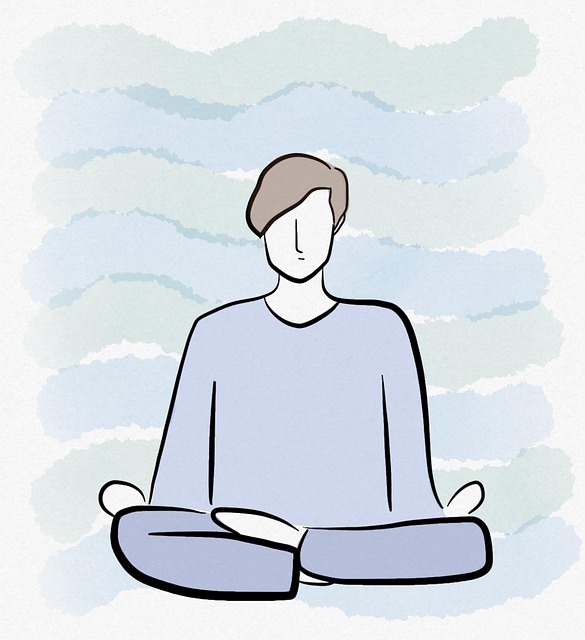Mindfulness meditation is a powerful natural therapy for Superior Panic Disorder and Anxiety Attacks, helping individuals manage stress and gain control over their reactions. By creating a peaceful environment, setting intentions, and using various techniques like breath awareness and body scans, one can cultivate calm and emotional healing. This holistic approach enhances mental health awareness, builds resilience through acceptance and reframing negative thoughts, and fosters self-compassion for long-term anxiety management. Integrating mindfulness into daily life offers improved mood, emotional well-being, and better communication, making it an effective Superior Panic Disorder and Anxiety Attacks Therapy.
Discover the transformative power of mindfulness meditation, a game-changing approach in treating Superior Panic Disorder and Anxiety Attacks. This comprehensive guide provides practical steps to manage anxiety effectively. Learn how preparing your space, understanding core techniques, and integrating mindfulness into daily routines can lead to lasting relief. Unwind, focus, and regain control with this evidence-based therapy, offering a calming symphony of benefits tailored for your mental well-being.
- Understanding Mindfulness Meditation for Anxiety Disorders
- Preparing for Your Practice: Setting the Scene
- Techniques and Exercises for Effective Mindfulness Meditation
- Integrating Mindfulness into Daily Life for Long-Term Benefits
Understanding Mindfulness Meditation for Anxiety Disorders

Mindfulness meditation has gained significant attention as a powerful tool for managing anxiety disorders, including Superior Panic Disorder and Anxiety Attacks. It involves training your mind to be fully present in the moment, observing thoughts and feelings without judgment. This practice allows individuals to develop a deeper understanding of their anxious responses and gradually reduce the intensity of fear and stress.
By incorporating mindfulness meditation into daily routines, those struggling with anxiety can enhance Mental Health Awareness, learn effective Conflict Resolution Techniques, and initiate Emotional Healing Processes. Through focused breathing exercises and mindful awareness, individuals can detach from anxious thoughts, cultivate a sense of calm, and regain control over their reactions. This ancient practice offers a natural and holistic approach to therapy, providing a sense of balance and resilience in the face of anxiety disorders.
Preparing for Your Practice: Setting the Scene

Preparing for your mindfulness meditation practice is a crucial step in reaping its benefits, especially if you’re managing anxiety or panic disorder. Create a peaceful and distraction-free environment that feels calming and supportive. This could involve dimming the lights, lighting candles, or playing soothing music to set a tranquil tone. Ensure you’re dressed comfortably in attire that allows for ease of movement. A quiet space where you won’t be disturbed helps maintain focus on your breath and inner experiences.
Consider using props like meditation cushions or chairs if sitting cross-legged becomes uncomfortable over time. Setting an intention for your practice—be it cultivating emotional regulation, fostering positive thinking, or developing inner strength—can guide your meditation and enhance its therapeutic effects. Remember, preparation is key to a successful mindfulness journey, particularly when seeking Superior Panic Disorder and Anxiety Attacks Therapy through this ancient practice.
Techniques and Exercises for Effective Mindfulness Meditation

Mindfulness meditation is a powerful tool for managing anxiety and stress, particularly beneficial for individuals dealing with panic disorders and anxiety attacks. The practice involves focusing one’s attention on the present moment, observing thoughts and sensations without judgment. Techniques such as breath awareness, body scans, guided visualizations, and mindful walking can help cultivate a sense of calm and grounding.
To enhance these practices, consider incorporating empathy-building strategies into your meditation routine. Cultivate a sense of self-compassion and understanding towards your experiences, recognizing that anxiety is a natural response to perceived threats. Resilience building techniques, such as reframing negative thoughts and practicing acceptance, can further strengthen your ability to navigate challenging emotions effectively. Remember, healthcare provider cultural competency training can also play a role in mindfulness meditation, ensuring practices are adapted to individual needs and cultural backgrounds.
Integrating Mindfulness into Daily Life for Long-Term Benefits

Integrating mindfulness into daily life offers a powerful approach to managing conditions like Superior Panic Disorder and Anxiety Attacks Therapy. Beyond occasional practices, cultivating mindfulness involves making it an integral part of your routine. This commitment allows for long-term benefits that extend beyond momentary calm. By consistently bringing your attention to the present, you train your mind to recognize and accept thoughts and emotions without judgment.
This heightened awareness fosters better mood management, enabling individuals to navigate stressful situations with greater resilience. Compassion cultivation practices, a key aspect of mindfulness, further enhance emotional well-being by encouraging empathy and understanding towards oneself and others. Moreover, integrating mindfulness into daily life can improve communication strategies, fostering deeper connections as individuals become more attuned to their own needs and feelings, leading to more meaningful interactions.
Mindfulness meditation offers a powerful tool for managing anxiety, especially in cases of Superior Panic Disorder and Anxiety Attacks Therapy. By integrating these practices into daily life, individuals can cultivate a deeper sense of calm and resilience. The techniques outlined in this article provide a solid foundation for beginners, while the discussion on long-term benefits encourages consistent practice. Remember, mindfulness is a journey; with dedication, one can navigate their mind’s landscape with greater clarity and peace.









